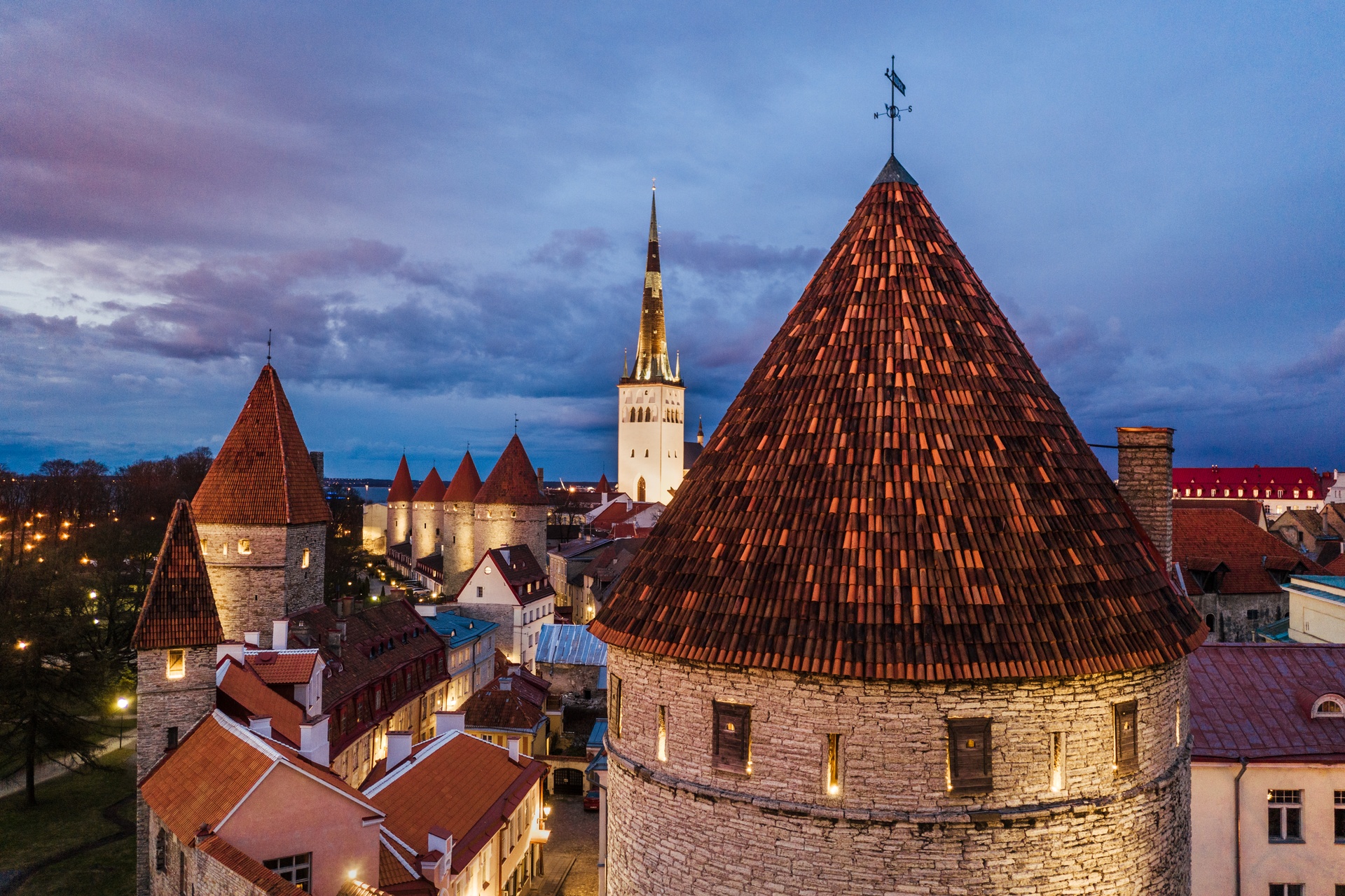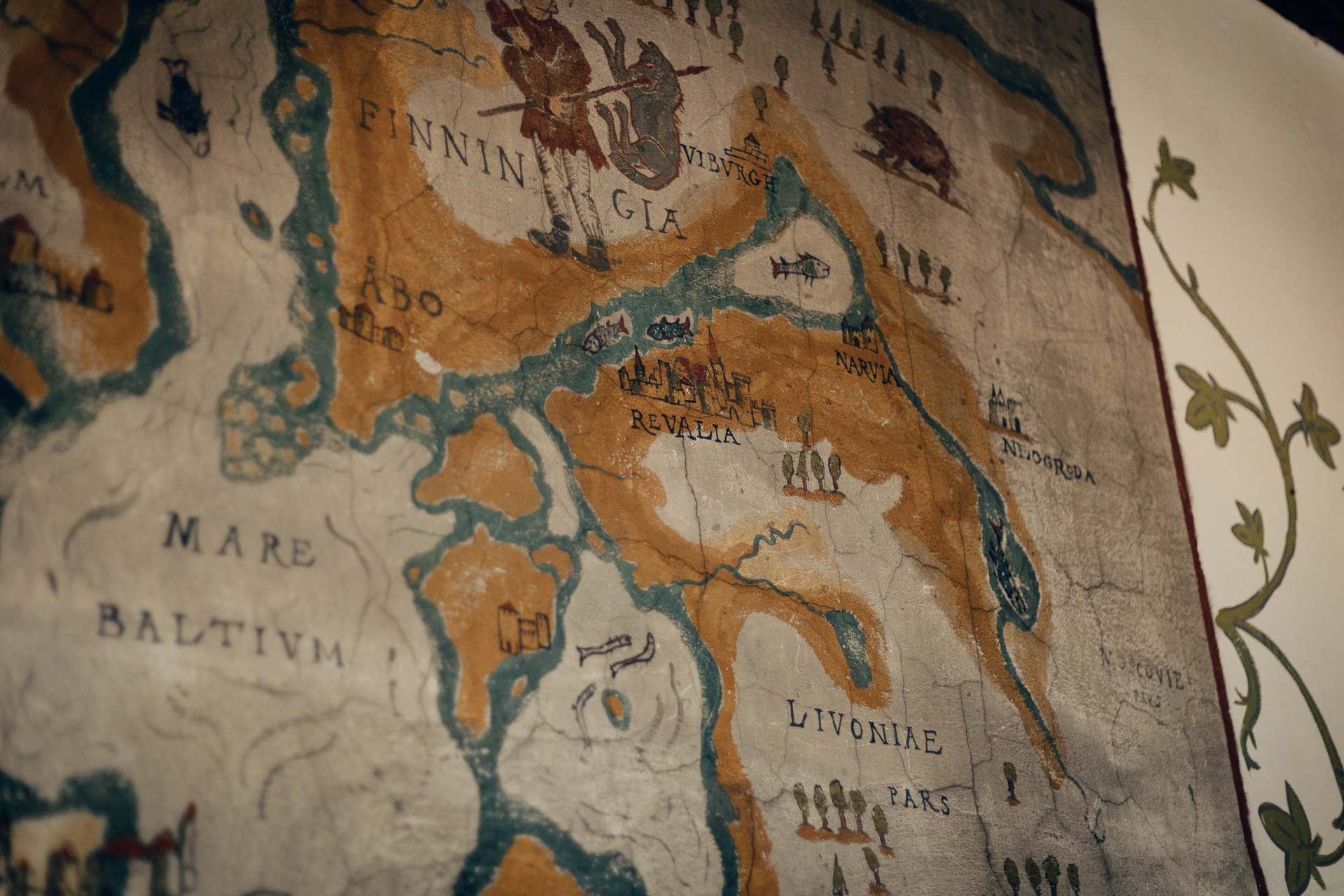
UNESCO heritage in Estonia
Estonia's cities, cultural traditions, and unique landscapes have been recognized by UNESCO. Let this list inspire your travels around the country.
Musical traditions, smoke saunas, dugout canoes, creative cities, and historical memories...
UNESCO has listed 13 aspects of the Estonian culture and landscape deserving of preservation and international recognition in the following categories:
- World heritage sites
- Memory of the World International Register
- Cultural practices and expressions of intangible heritage
- Biosphere reserves
- Creative Cities
Whether your interest lies in history, architecture, traditional crafts, or music, there is something for you to explore in Estonia. Estonia joined UNESCO in 1991 and here is a map of UNESCO lists and networks in Estonia.
World Heritage Sites
Heritage is our legacy from the past, what we live with today, and what we pass on to future generations. Places listed as World Heritage Sites tell the unique history of the land and its people. They are natural or cultural landmarks of exceptional global value. Estonia has two World Heritage Sites: Tallinn's Old Town and the Struve Arc.
Tallinn's Old Town
Tallinn's Old Town is one of the best-preserved medieval cities in the world. Its origins date back to the 13th century when the crusading knights of the Teutonic Order built a castle. Soon after, it became a major hub of the Hanseatic League, and its wealth is demonstrated by the opulence of the public buildings, such as the churches and merchant houses, which have survived to a remarkable degree despite the ravages of fire and war in the intervening centuries.
Tallinn's Old Town
Struve Geodetic Arc
The Struve Geodetic Arc was named after the astronomer Friedrich Georg Wilhelm Struve from the University of Tartu. Between 1816 and 1855, he and his colleagues calculated the first accurate measurements of a meridian to establish the size and shape of the Earth. The 2820 km long segment reaches from Northern Norway to the Black Sea. In 2005, the Struve Geodetic Arc was added to the UNESCO World Heritage List. Three out of the 34 listed original station points are found in Estonia — two points in Võivere and Simuna and one at Tartu Observatory. Commemorative plaques mark the relevant spots.
Struve Geodetic Arc
Memory of the World International Register
The UNESCO Memory of the World International Register documents the most significant moments of global history.
Historical documents of the Hanseatic League
A selection of documents on the history of the Hanseatic League that united trading cities around the Baltic Sea from the 13th to the 17th century was included in the Memory of the World Register as a joint nomination by Germany, Belgium, Denmark, Estonia, Poland, and Latvia. The documents from Estonia include letters addressed to the merchant Hildebrand Veckinchusen and his account books from the 15th century that are kept in the Tallinn City Archives.

The Baltic Way
On August 23rd, 1989, nearly two million people from the three Baltic nations — Estonia, Latvia, and Lithuania — held hands and formed a chain The Baltic Way spanning nearly 670 kilometers. This peaceful protest against the Soviet Union and solidarity between the three occupied states drew international attention. The date was chosen to draw attention to the 50th anniversary of the Molotov-Ribbentrop Pact. As part of a non-aggression treaty, Germany and the Soviet Union divided Finland, Estonia, Latvia, Lithuania, Poland, and Romania into "spheres of influence", violating international law. The Baltic Way was an important event leading to Estonia's second independence.
The Baltic Way
Cultural practices and expressions of intangible heritage
Intangible cultural heritage consists of traditions, customs, and practices passed down from generation to generation, including various forms of craftsmanship, rituals, festivals, music, and storytelling.
The Võromaa smoke sauna tradition
The smoke sauna tradition is an important part of everyday life in the southernmost Estonian community of Võromaa. It comprises a rich set of traditions, including the actual bathing customs, the skills of making bath whisks, building and repairing saunas, and smoking meat in the sauna. The sauna is a building or room heated by a stove covered with stones, with an elevated platform for sitting or lying. It has no chimney, and the smoke from burning wood circulates in the room. The smoke sauna tradition is primarily a family custom, practiced usually on Saturdays but also before major festivals or family events to relax the body and mind.
There are, of course, several smoke saunas around Estonia. Find the one that suits you.
The traditional lifestyle of Kihnu Island
Located off Estonia's west coast, Kihnu Island is home to a community of about 600 islanders. The island still bears close ties to its traditional roots, which remain alive and well today. Using traditional looms and local wool, the women weave and knit, crafting mittens, stockings, skirts, and blouses with bright colors, vivid stripes, and intricate embroidery. The listing also includes the Kihnu wedding ceremony, which is based on pre-Christian beliefs and lasts three days.
The "leelo" singing style of Setomaa
Seto leelo is a traditional way of singing that takes you back centuries to somewhere ancient and rural. Seto people consider singing a natural, everyday activity, a way to express thoughts and emotions, to collect memories, and to pass them on to future generations. The singing tradition in Setomaa is kept alive by both the older and younger generations. Several of the most famous local singers have been able to recall up to 20,000 rhymes, earning the title Seto Lauluimä, meaning "Seto Mother of Songs."
Estonia's Song and Dance Celebration
The Song and Dance Celebration brings together tens of thousands of Estonians. Taking place every five years and involving thousands of choir singers and dancers dressed in colorful traditional clothing, the roots of this lively outdoor festival stretch back as far as 1869, the dawn of the Estonian national movement. From 1928 onwards, the home of the much-loved festival has been the Tallinn Song Festival Grounds near Tallinn's coastline. The dance celebration is a more recent tradition dating back to 1934, and today, the two traditions are seen as inseparable by modern audiences.
Estonia's Song and Dance Celebration
Haabjas, Soomaa's traditional dugout canoe
During Estonia's famed fifth season, the low-lying land of Soomaa floods and the waters rise, making boats a very useful means of transportation. Local inhabitants of this region traditionally used haabjas, Estonian for expanded logboat or dugout canoe. In fact, in Soomaa National Park, these boats are still used regularly during the yearly floods. Since the flooding of the Soomaa region is so consistent, these construction techniques never fell into disuse.
Mulgi puder
Mulgi puder is a traditional potato-barley mash from Mulgimaa in South Estonia. It was added to the UNESCO Intangible Cultural Heritage List at the end of 2024.
The dish is made by placing sliced potatoes in a pot and adding pre-soaked barley. After adding salt, the ingredients are boiled until soft enough to mash. Mulgi puder is served with pan-fried pork knuckle, which can be added to the mash or served on the side. It can also be made without meat and served with sour cream, pickles, and a vegetable garnish.

Biosphere reserves
A biosphere reserve is an area of international importance recognized under UNESCO's "Man and the Biosphere" program, where nature, culture, and green economy mutually support each other.
The West Estonian Archipelago Biosphere Reserve
West Estonian Archipelago Biosphere Reserve comprises the West Estonian islands, numerous islets, and marine areas. Our nature has remained unique, untouched, and diverse thanks to the skills and knowledge of local people who live in harmony with nature. The islands offer a range of experiences in the forests, at sea and on land. Traditional, organic local food from Estonia's western Islands has laid the foundation for food festivals famous for their abundant selection and delicious flavors. The islands' art and handicrafts, which have been influenced by the local environment, are enchanting and never fail to fascinate visitors.
The West Estonian Archipelago Biosphere Reserve
Creative Cities
Tartu — UNESCO Creative City of Literature
Tartu was accepted into UNESCO's Creative Cities Network and received the international title of City of Literature at the end of 2015. Tartu has proposed three international initiative ideas. The urban literary projects include bus poetry on the buses of Tartu as a pilot project. The university students' translation cooperation introduces authors from neighboring countries. And a literary non-city project brings in the peripheral regions of cities with the target group of this project mostly made up of text creators, locals and tourists who are looking for non-traditional experiences.
Viljandi — UNESCO Creative City of Crafts and Folk Art
Viljandi was added to the network in 2019 as a City of Crafts and Folk Art. The leading role of the position has been taken up by the University of Tartu's Culture Academy in Viljandi, focusing on sustainability and youth involvement. Likewise, Viljandi is now a center for professional creators, researchers, and entrepreneurs who work with folk culture, such as the Viljandi Folk Music Festival. Many events occur at the Estonian Traditional Music Centre in Viljandi throughout the year.
Tallinn — UNESCO Creative City of Music
Tallinn is the largest center of music culture in Estonia, where song and dance celebrations and major international festivals and concerts take place. Held every five years at the Tallinn Song Festival Grounds, the Estonian Song and Dance Celebration (Laulupidu) that began in 1869 is one example of the city's rich music history. Over a hundred years later, in 1988, mass evening singing demonstrations broke out at the Tallinn Song Festival Grounds, in what is seen as the start of the so-called Singing Revolution, which greatly helped bring about the independence of Estonia and its two Baltic neighbours from the Soviet Union. In recent years, Tallinn Music Week has filled the city with music from local and international artists every spring.
Get inspired
Last updated
05.12.2025
